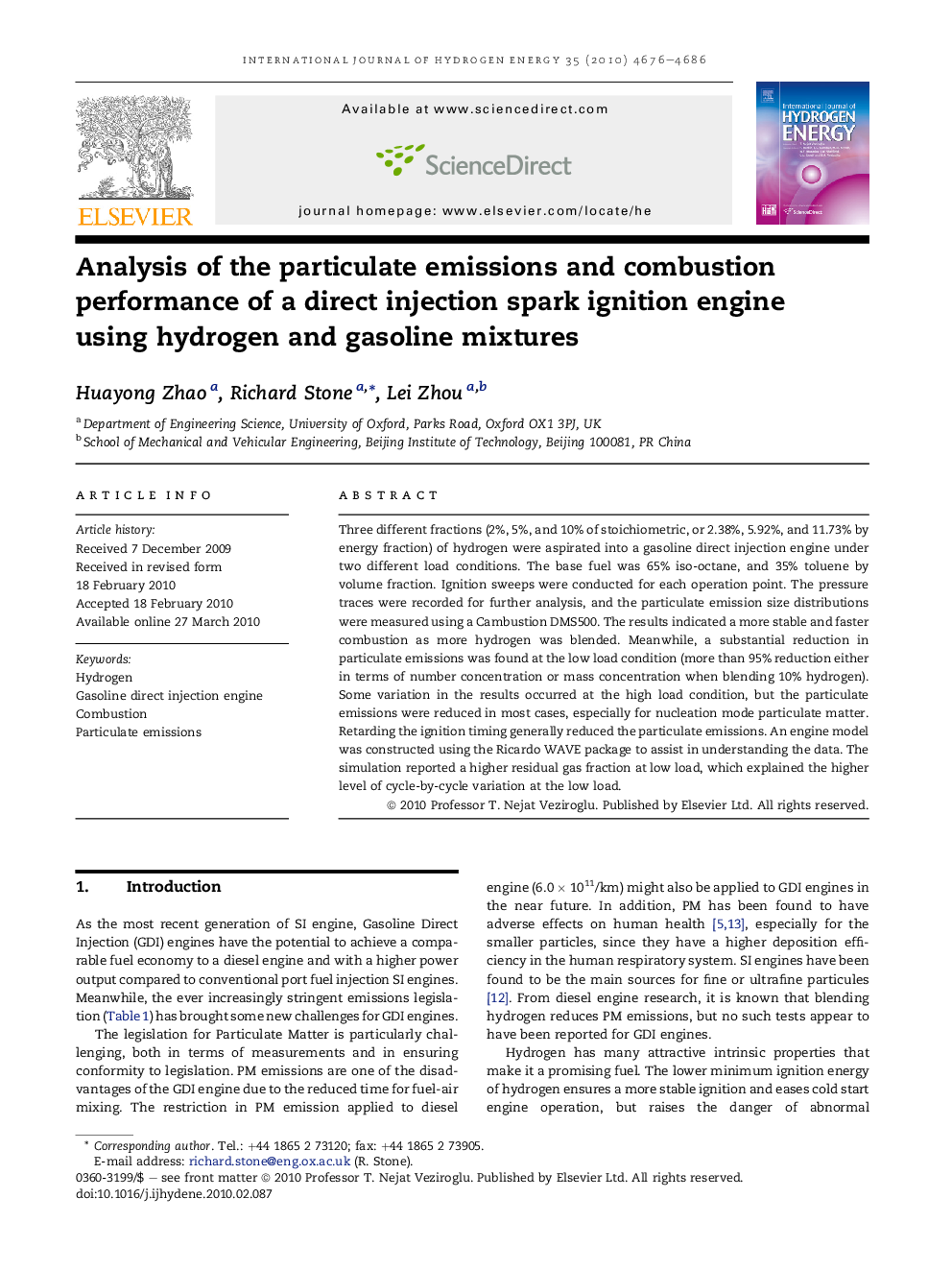| Article ID | Journal | Published Year | Pages | File Type |
|---|---|---|---|---|
| 1282814 | International Journal of Hydrogen Energy | 2010 | 11 Pages |
Three different fractions (2%, 5%, and 10% of stoichiometric, or 2.38%, 5.92%, and 11.73% by energy fraction) of hydrogen were aspirated into a gasoline direct injection engine under two different load conditions. The base fuel was 65% iso-octane, and 35% toluene by volume fraction. Ignition sweeps were conducted for each operation point. The pressure traces were recorded for further analysis, and the particulate emission size distributions were measured using a Cambustion DMS500. The results indicated a more stable and faster combustion as more hydrogen was blended. Meanwhile, a substantial reduction in particulate emissions was found at the low load condition (more than 95% reduction either in terms of number concentration or mass concentration when blending 10% hydrogen). Some variation in the results occurred at the high load condition, but the particulate emissions were reduced in most cases, especially for nucleation mode particulate matter. Retarding the ignition timing generally reduced the particulate emissions. An engine model was constructed using the Ricardo WAVE package to assist in understanding the data. The simulation reported a higher residual gas fraction at low load, which explained the higher level of cycle-by-cycle variation at the low load.
